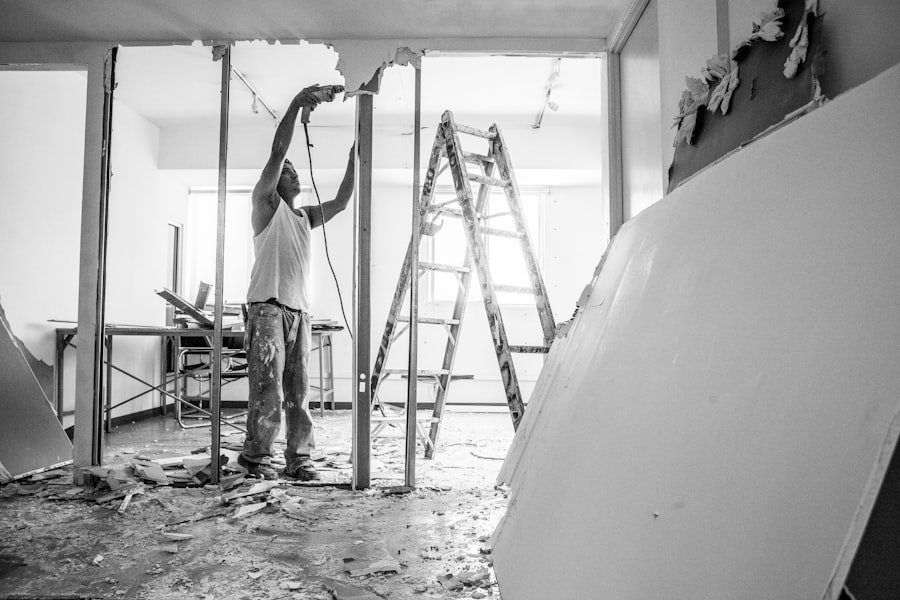Engaging expert remodeling contractors can significantly enhance the quality and efficiency of your home renovation project. One of the primary advantages is their extensive knowledge and experience in the field. These professionals are well-versed in the latest trends, materials, and techniques, which allows them to provide valuable insights that can elevate your project.
For instance, an experienced contractor can suggest innovative design solutions that you may not have considered, ensuring that your remodel not only meets your aesthetic preferences but also adheres to functional requirements. Moreover, expert remodeling contractors bring a level of professionalism that is often hard to match. They understand the importance of adhering to timelines and budgets, which can be crucial in preventing project overruns.
Their familiarity with local building codes and regulations ensures that your remodel complies with all necessary legal requirements, reducing the risk of costly fines or the need for rework. Additionally, established contractors often have a network of reliable subcontractors and suppliers, which can streamline the procurement of materials and services, ultimately leading to a smoother remodeling process.
Key Takeaways
- Hiring expert remodeling contractors ensures quality workmanship and efficient project completion.
- Research and vet contractors thoroughly to find the best fit for your specific remodeling needs.
- Understanding the remodeling process and timeline helps set realistic expectations and avoid delays.
- Proper budgeting and financing are crucial to keep your remodeling project on track financially.
- Effective communication and collaboration with your contractor lead to a smoother remodeling experience and better results.
How to Find the Right Remodeling Contractor for Your Project
Finding the right remodeling contractor is a critical step that can determine the success of your project. Start by conducting thorough research; seek recommendations from friends, family, or neighbors who have recently completed similar renovations. Online platforms such as Yelp, Angie’s List, or Houzz can also provide valuable reviews and ratings of local contractors.
Once you have a shortlist, it’s essential to check their credentials, including licenses, insurance, and any relevant certifications. This verification process helps ensure that you are hiring a legitimate professional who adheres to industry standards. After narrowing down your options, schedule interviews with potential contractors.
This is an opportunity to discuss your vision and gauge their understanding of your project. Pay attention to their communication style; a contractor who listens attentively and asks insightful questions is likely to be more invested in your project. Requesting references from previous clients can also provide insight into their work ethic and reliability.
Finally, obtaining detailed written estimates from multiple contractors will allow you to compare not only costs but also the scope of work proposed, helping you make an informed decision.
Understanding the Remodeling Process and Timeline

The remodeling process can be complex and multifaceted, often requiring careful planning and execution. Typically, it begins with an initial consultation where you discuss your ideas and goals with the contractor. This phase may involve site visits and assessments to determine the feasibility of your plans.
Following this, the contractor will create a detailed proposal that outlines the scope of work, materials needed, and a timeline for completion. This proposal serves as a roadmap for the entire project and should be reviewed thoroughly before moving forward. Once the project commences, it usually unfolds in several stages: demolition, construction, installation, and finishing touches.
Each phase has its own timeline and set of tasks that must be completed before moving on to the next. For example, demolition may take a few days depending on the extent of the work, while construction could span several weeks or even months for larger projects. It’s crucial to maintain open lines of communication with your contractor throughout this process to address any unforeseen challenges or changes that may arise.
Budgeting and Financing Your Remodeling Project
| Category | Estimated Cost Range | Percentage of Total Budget | Notes |
|---|---|---|---|
| Planning and Design | 1,000 – 5,000 | 5% – 10% | Includes architect and designer fees |
| Materials | 5,000 – 20,000 | 30% – 40% | Depends on quality and type of materials |
| Labor | 7,000 – 25,000 | 40% – 50% | Contractor and subcontractor fees |
| Permits and Inspections | 500 – 2,000 | 2% – 5% | Required by local authorities |
| Contingency Fund | 1,500 – 5,000 | 10% – 15% | For unexpected expenses |
| Financing Costs | Varies | Varies | Interest on loans or credit lines |
Budgeting is one of the most critical aspects of any remodeling project. It’s essential to establish a realistic budget that encompasses all potential costs, including labor, materials, permits, and unexpected expenses. A common rule of thumb is to allocate an additional 10-20% of your total budget for contingencies.
This buffer can help mitigate financial strain if unexpected issues arise during the renovation process, such as hidden structural problems or delays in material delivery. Financing options for remodeling projects vary widely and can include personal savings, home equity loans, or specialized renovation loans. Home equity loans allow homeowners to borrow against the equity they have built up in their property, often at lower interest rates than personal loans.
Alternatively, some homeowners may consider refinancing their mortgage to access funds for renovations. It’s advisable to consult with a financial advisor or mortgage specialist to explore the best financing options tailored to your financial situation and long-term goals.
Choosing the Right Materials and Design for Your Space
Selecting appropriate materials and design elements is crucial in achieving a successful remodel that reflects your personal style while ensuring durability and functionality. When choosing materials, consider factors such as maintenance requirements, longevity, and environmental impact. For instance, opting for sustainable materials like bamboo flooring or recycled glass countertops not only contributes to eco-friendliness but can also enhance the aesthetic appeal of your space.
Design choices should align with both your lifestyle and the overall architecture of your home. For example, if you have a busy household with children or pets, selecting durable finishes that can withstand wear and tear is essential. Additionally, incorporating elements such as open floor plans or multifunctional furniture can maximize space efficiency while providing a modern look.
Collaborating closely with your contractor or an interior designer can help ensure that your material selections complement each other and create a cohesive design throughout your home.
Maximizing Space and Functionality in Your Remodel

Maximizing space and functionality is often a primary goal in any remodeling project. This is particularly important in smaller homes where every square foot counts. One effective strategy is to consider open-concept designs that eliminate unnecessary walls and barriers between rooms.
This approach not only creates a more spacious feel but also enhances natural light flow throughout the home. In addition to structural changes, incorporating smart storage solutions can significantly improve functionality. Built-in shelving units, under-stair storage, or multi-purpose furniture can help keep spaces organized while minimizing clutter.
For instance, a kitchen island with built-in cabinets can serve as both a cooking area and additional storage space. Thoughtful planning during the design phase ensures that every element serves a purpose while contributing to an overall sense of harmony within the remodeled space.
The Importance of Communication and Collaboration with Your Remodeling Contractor
Effective communication is paramount throughout the remodeling process. Establishing a clear line of communication with your contractor from the outset helps set expectations regarding timelines, budgets, and design choices. Regular check-ins can facilitate discussions about progress updates or any challenges that may arise during construction.
A contractor who encourages open dialogue fosters a collaborative environment where both parties feel comfortable sharing ideas or concerns. Collaboration extends beyond mere communication; it involves actively participating in decision-making processes related to design changes or material selections. When homeowners engage with their contractors in this manner, it often leads to better outcomes that align closely with their vision.
Additionally, being involved in various stages of the project allows homeowners to feel more connected to the transformation taking place in their home.
Tips for Maintaining Your Newly Remodeled Space
Once your remodeling project is complete, maintaining your newly renovated space is essential for preserving its beauty and functionality over time. Regular cleaning routines tailored to specific materials can help prevent wear and tear; for example, using gentle cleaners on natural stone surfaces or avoiding abrasive materials on painted walls can prolong their lifespan. Establishing a maintenance schedule for appliances or systems installed during the remodel—such as HVAC units or plumbing fixtures—ensures they operate efficiently.
Furthermore, consider seasonal checks for any signs of wear or damage that may require attention. For instance, inspecting caulking around sinks or bathtubs can prevent water damage from leaks over time. By being proactive about maintenance tasks and addressing issues promptly, homeowners can enjoy their remodeled spaces for years to come while preserving their investment in quality renovations.




